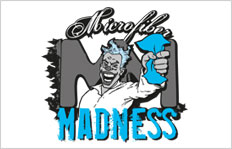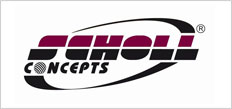Dr. Beasley's NSP GL Glass Polish 8 oz
The Premier Windshield Restoration Solution - Achieve Crystal-Clear Windshield Perfection with Dr. Beasley's NSP GL
Dr. Beasley’s NSP GL is a corrective primer for glass that removes scratches, water spots and etching to produce a smooth, clear finish that’s primed for protection with a glass ceramic coating such as CARPRO Flyby30 or GForce. Formulated with a patented ultra-hard nanoparticle abrasive, it cuts faster and finishes smoother than traditional cerium oxide.
The biggest problem with glass polishing is that it can take a long time, especially when you need to get rid of scratches, etching and other subsurface defects. Recognizing this, Dr. Beasley’s founder and lead chemist Jim Lafeber got in the lab and re-engineered his Nano Surface Primer paint correction technology for glass — thus, NSP GL was born. At first Jim tried cerium oxide, a conventional glass polish abrasive, but he wasn’t getting results fast enough. It was time to think beyond conventional abrasives and start looking at other industries.
After rigorously testing multiple abrasive types, Jim found the key to NSP GL at use amongst military applications. He was able to source a unique, ultra-hard nanoparticle abrasive with diverse applications. This patented technology is used by the Air Force to polish F-35 fighter jet canopies for crystal clear in-flight visibility. Through careful engineering, Jim adapted the technology for automotive glass. Testing the technologies side-by-side, he found the patented nanoparticle abrasive to be superior to cerium oxide in speed, efficiency and most important to us, clarity.
What makes the nanoparticle abrasive so effective is the way it works with the proprietary NSP nanogel. The nanogel carrier does a number of things — it distributes abrasives evenly for an efficient cut, but most importantly, it causes mechanical and chemical reactions that activate the abrasives. In additional to all that, the nanogel also establishes a primed ceramic foundation for the nanocoating to follow, eliminating the panel wipe step like all Dr. Beasley Nano Surface Primers do.
Features:
- Produces Extreme Clarity.
- Removes Scratches from Glass.
- Removes Water Spots from Glass.
- A little goes a long way.
- Made in the USA.
Application:
Sub-Surface Glass Correction Instructions
Sub-surface glass correction is for removing defects that are below the surface or in the glass. This can include swirls, scratches, wiper marks, water mineral etchings, tiny pits, scuffs, and miscellaneous abrasions. Unlike topical glass correction, sub-surface glass polishing can only be performed by machine. The human hand is not powerful enough to correct sub-surface defects in glass.
- Clean, decontaminate, and dry the surface.
- Apply NSP GL in a circular pattern around the face of a Rayon or felt polishing pad attached to a machine buffer.
- Place the face of the pad against the glass. Turn buffer to medium speed and spread the product over the section of glass.
- For rotary buffers, turn the speed setting from a low RPM to 2800 RPM. For orbital buffers, turn to the highest speed setting. Make slow overlapping passes in a crosshatch pattern. Periodically wipe away NSP GL residue from the glass and inspect. If desired results were achieved, move to the next section and be sure to overlap slightly into the previous section for optimal results. If defects remain, repeat process until desired results are achieved. How long or how many passes you’ll need to make depends on how deep a defect you’re trying to remove. For shallow wiper marks, you may need to buff the glass for as long as 20 minutes. This time will be longer for deeper wiper marks, swirls, and scratches.
- Periodically wipe away NSP GL residue from the glass and inspect. If desired results were achieved, move to the next section and be sure to overlap slightly into the previous section for optimal results. If defects remain, repeat process until desired results are achieved.
Topical Glass Correction Instructions:
Topical glass correction is for removing any type of contamination that is bonded to the outer surface of the glass. This can include things like water spots, road film and drizzle stains. Topical glass polishing can be done by hand or machine including both orbital and rotary polishers.
- Clean, decontaminate, and dry the surface.
- Apply NSP GL in a circular pattern around the face of a Rayon or felt polishing pad.
- Place the face of the pad against the glass. Turn buffer to medium speed and spread the product over the glass.
- Once product is spread, turn buffer to the highest speed. Make 6-8 overlapping passes over the glass to remove any water spots, traffic film or stains.
- Wipe off any residue and inspect the results. If desired results were achieved, proceed to the next window or area. If results were not achieved, repeat steps 1-3.
Dr. Beasley’s Suggests:
Interface Pad:
To reduce strain while using NSP GL, we strongly recommend using an interface pad. This pad provides cushioning, flexibility, and smoother action between the surface and your arms. Recommended sizes: 5" and 3".
Assistance for Glass Correction:
For more effective and quicker sub-surface glass correction, having a second person assist is beneficial. An assistant can continuously add water to the glass, which helps achieve better results, lubricates the surface for easier maneuverability, and keeps the surface temperature cool. Additionally, taking turns buffing the glass with an assistant can help reduce fatigue during extended machine correction sessions.
Handling Large Glass Surfaces:
For windshields and other large glass windows, we recommend dividing the glass into smaller, more manageable sections. For instance, a windshield can be divided into four quadrants to make the task more manageable.
Managing Wiper Arms:
Depending on the design and placement of the wiper arms and blades, you may need to move them out of the way. A simple solution for many cars is to use painter’s tape. Place a roll of painter’s tape between the wiper arm and the car to hold the wiper arms away from the glass. This allows you to run the buffer and spinning glass pad all the way to the bottom of the windshield without interference from the wiper arms.




















